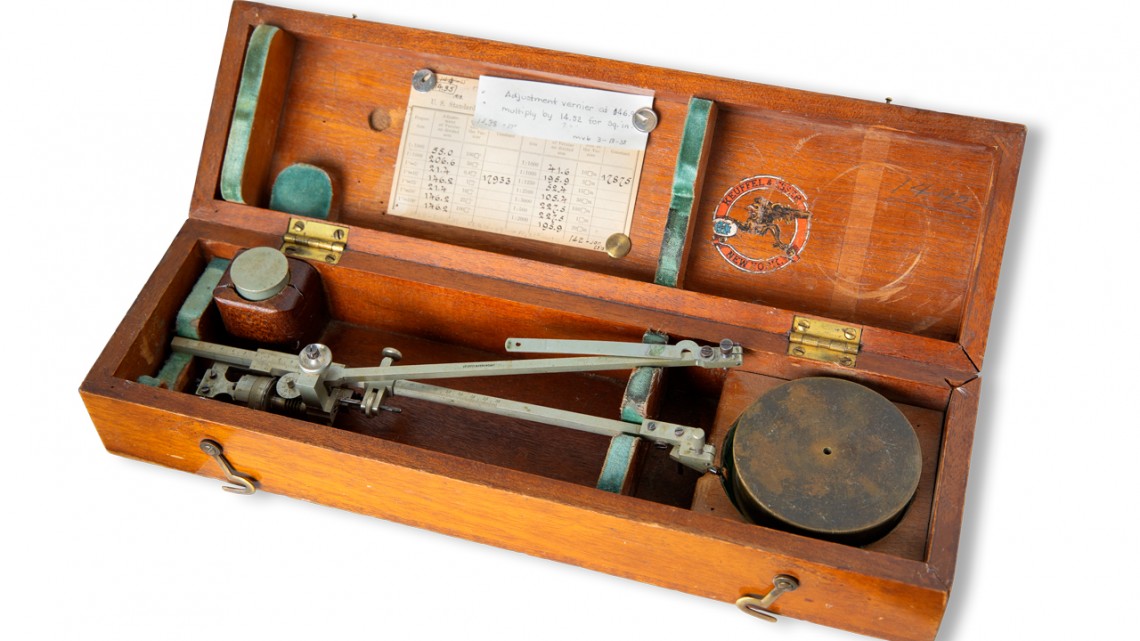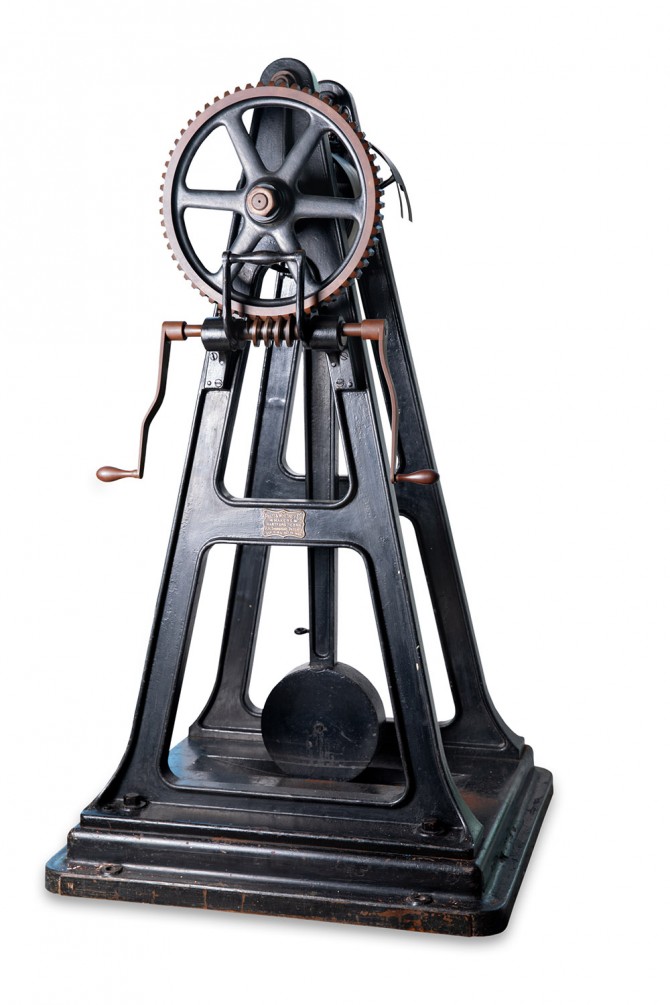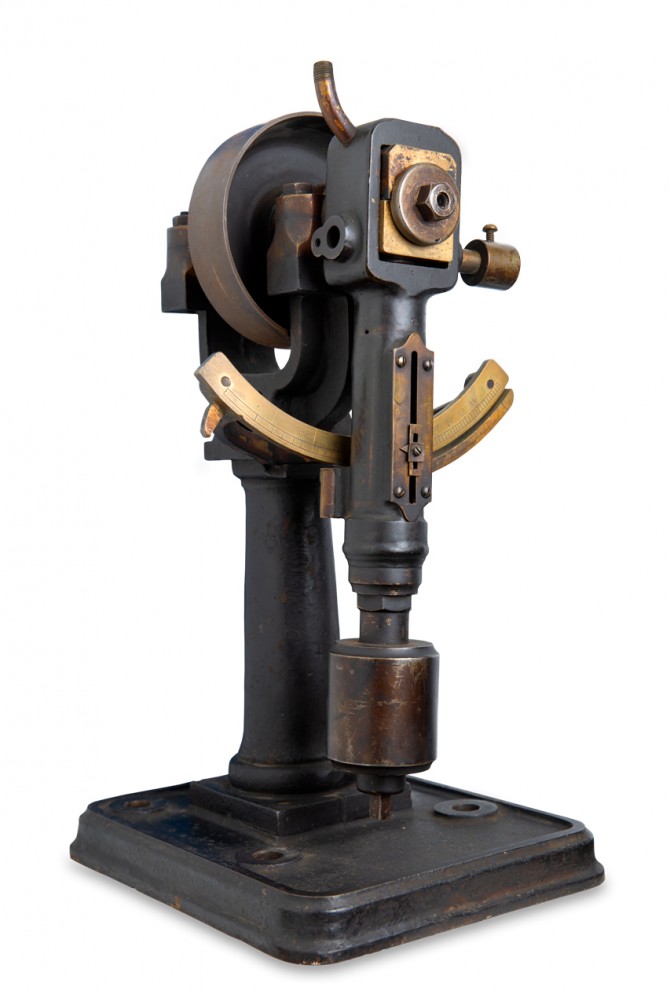
A planimeter, used to measure the efficiency of steam engines.
Marvels of mechanism that changed engineering education
By Syl Kacapyr
Engineers need reliable information about the strength of the materials they use in order to design safe mechanical parts, but in the mid-1800s an alarming number of steam boiler explosions causing deaths and injuries served as a worrying reminder that there were few tools to measure material properties.
Robert Henry Thurston, a renowned engineer and educator, believed in the value of incorporating scientific and mathematical principles, as well as shop practice, into engineering – an educational vision he brought with him to Cornell in 1885 when he was named the director of what was then the Sibley College of Mechanical Engineering and Mechanic Arts.
The mechanical devices Thurston invented to better measure, process and record test information improved the safety of steam boilers, transforming mechanical engineering from a shop-based, practical profession into one based on scientific design and academic training.
The Robert H. Thurston Collection – 16 artifacts, including patented devices, models, personal letters and books – remains on display in Thurston and Upson halls. In May, it was designated a Heritage Collection by the American Society of Mechanical Engineers.
The centerpiece of the collection is Thurston’s “autographic” torsion testing machine, which delivered data about the stress and strain of metal alloys. A cylindrical metal sample could be placed in the machine and, as a hand-crank mechanism raised its weighted pendulum, it would apply increasing amounts of torque and begin to twist the metal. A pencil would trace a corresponding graph onto paper, producing a stress-strain curve that was as distinctive as a person’s signature.
Another innovative device was used to test the lubricating properties of machine oils. The oil served as a mechanical coupling between a belt-driven cylinder and a weighted pendulum. The deflection of the pendulum allowed engineers to determine the frictional losses associated with the oil.
Syl Kacapyr is public relations and content manager for the College of Engineering.
Media Contact
Get Cornell news delivered right to your inbox.
Subscribe



